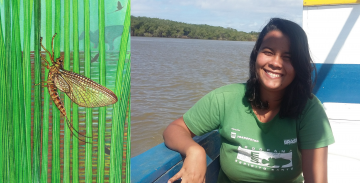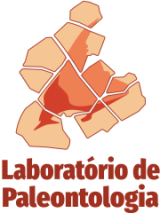New extinct species of aquatic insect from the Cretaceous of Brazil

Brazilian researchers from the Federal University of Espírito Santo (Ufes), the Federal University of Viçosa (UFV) and the Regional University of Cariri (Urca), along with researchers from the State Museum of Natural History in Kiev, Ukraine, and the State Museum of Natural History in Stuttgart, Germany, published on July 27th a scientific article describing a new species of aquatic insect from the Crato Formation geological unit, in Northeastern Brazil.
The Crato Formation
Around 113–125 million years ago, during the Early Cretaceous, Africa and South America were still united, forming a single continent known as Gondwana. However, the land blocks that formed these continents were already beginning to detach, forming a narrow, shallow ocean. On the edge of this ocean, there was a lacustrine environment with diverse animal and plant life, which was preserved as a fossiliferous unit that we know today as the Crato Formation, part of the so-called Araripe Basin, whose rocks are found mainly in the Ceará State of Brazil.
The new species
The fossil belongs to the order Ephemeroptera, popularly known as mayflies, which are winged insects that live for a few days during adult life, sometimes even minutes. During their larval stage, they are aquatic. The new species was included in the extinct Hexagenitidae family and named Protoligoneuria heloisae. Larvae fossils of this family are abundant in the Crato Formation, but adults as Protoligoneuria heloisae are rare. Representatives of the Hexagenitidae were probably one of the few organisms that actually lived in the ancient paleolakes of Crato, and their larvae even suffered mass mortality events due to climatic stresses in this region during the Cretaceous.
Tribute
The paper is result of Arianny Storari's master's research, carried out in the Graduate Program of Biological Sciences at the Ufes, where she is currently a PhD student, carrying out research at the Paleontology Laboratory. It was there that she knew her laboratory colleague Paula Heloísa Santana Resende, who died in June 2021 and was honored in the name of the new species. Paula studied pterosaurs from the Araripe Basin and was also supervised by Professor Taissa Rodrigues, one of the authors of the article. "We wanted to honor her for this being a resulting paper from the laboratory in which Paula also worked. We decided to name this species of an ephemeral insect in tribute to a young researcher who left so soon", remembered Arianny.
The research was published in the journal Historical Biology and is authored by Arianny P. Storari, Roman J. Godunko, Frederico F. Salles, Antônio A. F. Saraiva, Arnold H. Staniczek e Taissa Rodrigues. Link: https://doi.org/10.1080/08912963.2021.1952196
Protoligoneuria heloisae reconstruction by paleoartist Dr. Aline Ghilardi (UFRN).

